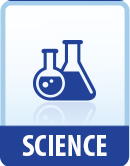|
This section contains 345 words (approx. 2 pages at 300 words per page) |
Yeast artificial chromosomes (YAC) are cloning vectors. Regular cloning vectors have size limits for their DNA inserts. Plasmids can take up to 10 kilobases of DNA. Bacteriophages take 15 kilobases of DNA. Cosmids can take up to 50 kilobases of DNA. YAC take DNA stretches of 50 to 2000 kilobases. YAC possess all the sequence elements for a chromosome to replicate in yeast. YAC have a yeast replication origin, and have a centromere to allow the proper segregation of the two chromosomes into daughter cells. YAC have two telomeres to seal the ends of the chromosome. YAC also have a cloning site like other vectors, and two arms. On each arm, there is a selectable marker. There is usually a third marker that overlaps with the cloning site. Loss of the third marker distinguishes YAC with foreign DNA from the ones that do not have insert.
YAC have unique restriction sites at the cloning site and at the DNA sequence between the two telomeres. Restriction digestion with these two enzymes results in two pieces of linear DNA fragments. Each of the fragments has a telomere at one end and a sticky or blunt terminus at the other end. Chromosomal DNA of the targeted organism is digested with the same enzyme as the one at the cloning site. Ligation (attachment) of foreign DNA with the digested YAC allows the joint of the two ends. A perfect chromosome with the foreign DNA insert is then formed. The ligated DNA can then be transformed into yeast cells for further screening and identification. YAC's capacity for large DNA fragments allows researchers to study large intact DNA regions in detail. YACs make it possible to clone one large gene, or gene complexes that exceed the limits of other cloning vectors. By restriction digestion of YAC clones, researchers are able to construct physical chromosomal maps. Another major advantage of cloning in with YAC is that it allows the cloning of some sequences that are stable and intact in yeast, but unstable or absent when cloned into prokaryotic systems.
|
This section contains 345 words (approx. 2 pages at 300 words per page) |


